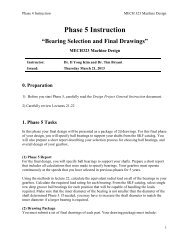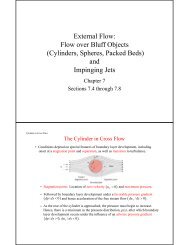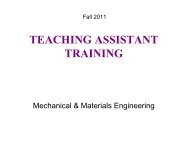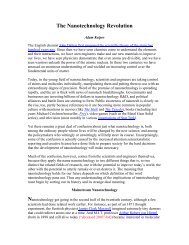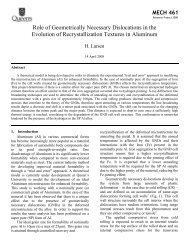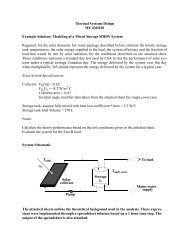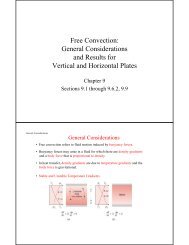Numerical Study of Passive and Active Flow Separation Control ...
Numerical Study of Passive and Active Flow Separation Control ...
Numerical Study of Passive and Active Flow Separation Control ...
You also want an ePaper? Increase the reach of your titles
YUMPU automatically turns print PDFs into web optimized ePapers that Google loves.
airfoil is shown in Fig. 14. The negative value <strong>of</strong> C between x = 0.06C <strong>and</strong> x = 0.285C,<br />
f<br />
indicates the near-wall reversed flow in the separation bubble. Both Fig. 13 <strong>and</strong> Fig. 14<br />
confirm the observation in Fig. 11 <strong>and</strong> Fig. 12 in terms <strong>of</strong> the location <strong>and</strong> length <strong>of</strong> the<br />
separation bubble. The abrupt recovery <strong>of</strong> C from its negative peak to a positive peak<br />
f<br />
between x = 0.25C <strong>and</strong> x = 0.35C corresponds to transition <strong>and</strong> reattachment <strong>of</strong> the<br />
separated flow.<br />
Fig. 13. Mean pressure coefficient <strong>of</strong><br />
baseline case<br />
18<br />
Fig. 14. Mean skin friction coefficient <strong>of</strong><br />
baseline case<br />
The chord-wise distribution <strong>of</strong> peak turbulence kinetic energy k is displayed in Fig.<br />
15. The ‘peak’ means the maximum k at each streamwise location. The abrupt increase <strong>of</strong><br />
k at xº 0.24C indicates the starting point <strong>of</strong> transition to turbulence, which is also shown<br />
by the sharp increase <strong>of</strong> C displayed in Fig. 14. It is clear that transition occurs before<br />
f<br />
the separated flows reattaches, because the mean reattachment point is at x = 0.285C<br />
while transition starts at x º 0.24C.



